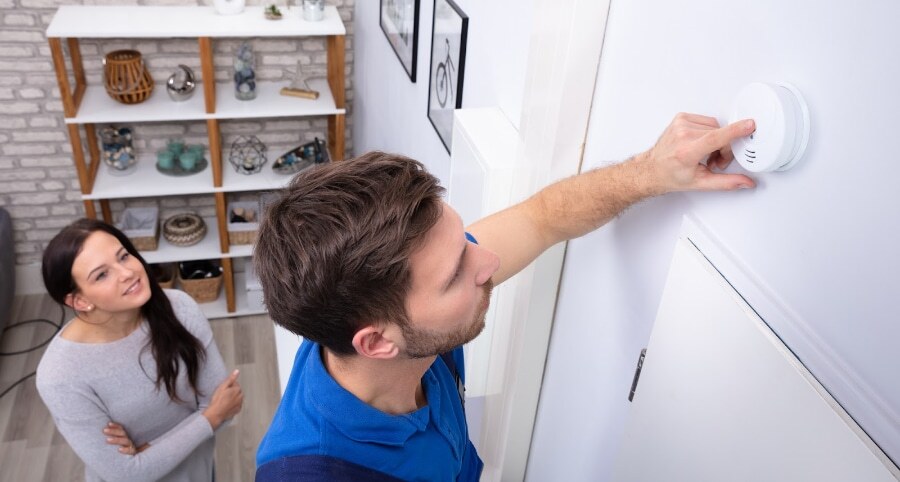Where to install carbon monoxide detectors in your Pittsburgh home

Carbon monoxide is dissimilar to typical dangers home occupants confront as you are unable to notice it by smell or sight. Although it’s not noticeable by human senses like smoke, fire, or flooding, you may still simply and effectively shield your household with CO detectors. See where to install carbon monoxide detectors in your Pittsburgh property and explore the advantages of integrating them in your inclusive security plan.
Where is CO found?
Because of its lack of smell and color, carbon monoxide has earned its nickname as the silent killer. It forms as a result of an incomplete burning of fuels in appliances like generators, furnaces, fireplaces, and gas stoves. Most households won’t encounter issues with their fuel-burning appliances if they keep them maintained. But if you forget about regular servicing or don’t have enough ventilation, a build-up of this potentially life-threatening gas may result.
Early indicators of CO poisoning include nausea, vomiting, headaches, and dizziness. These usually occur at lower quantities of CO. Being subjected to higher concentrations for an extended timeframe can result in cardiopulmonary arrest and death.
Recommendations on where to install Pittsburgh carbon monoxide detectors
Each home ought to have at least one CO detector. Actually, you should place them on every floor, and that includes basements where fuel-burning appliances are frequently located. Use these recommendations on where to install Pittsburgh carbon monoxide detectors:
-
Place one within 10 feet of sleeping quarters. This placement is most important, so put it here in the event you only use a single carbon monoxide detector.
-
You ought to have a carbon monoxide detector on all floors of your house, especially on ones with fuel-burning appliances.
-
To prevent false alarms, keep them a minimum of 10 feet from producers of carbon monoxide, such as gas stoves. A touch of CO might be released when fuel-burning appliances come on.
- Avoid installing near windows and doors, as external air will lessen the unit’s effectiveness.
-
Place them in spaces above attached garages.
Like you would with smoke alarms, inspect your CO units on a regular basis, wipe away dust and grime as needed, and avoid accidentally leaving something beside them. In general, get new detectors every 5-6 years.
Enhance safety by including CO detectors in your home security system
Today’s home security systems give you more layers of protection than you’ve ever had before. In fact, you can add carbon monoxide detectors and other safety alarms straight into your system. You and your monitoring agents will be contacted whenever your alarm is tripped. This type of backup is terrific in case you fail to hear the alarm or if you’re away from home.
Enhance safety by including CO detectors in your home security system
Today’s home security systems give you more layers of protection than you’ve ever had before. In fact, you can add carbon monoxide detectors and other safety alarms straight into your system. You and your monitoring agents will be contacted whenever your alarm is tripped. This type of backup is terrific in case you fail to hear the alarm or if you’re away from home.
Install CO detectors with your Vivint smart home in Pittsburgh